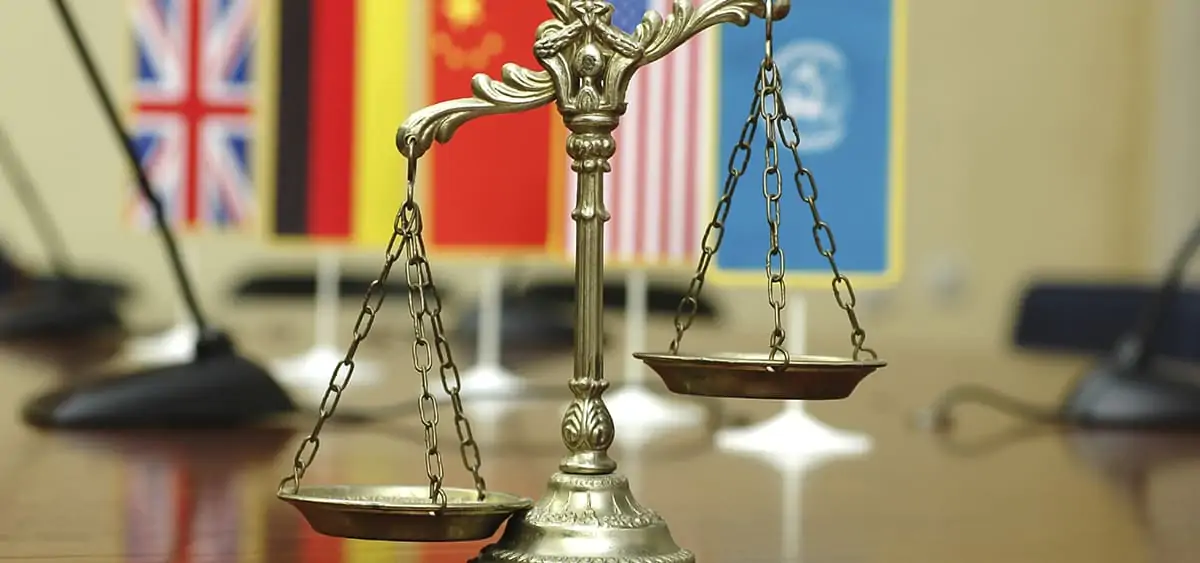The Unseen Threats: Navigating the Complex Landscape of Enterprise Operations
In today's fast-evolving business environment, enterprises often find themselves grappling with an intricate web of regulations, contractual obligations, and potential legal pitfalls. The drive for innovation and operational efficiency can sometimes overshadow the critical need for robust legal oversight. Many organizations operate under the misconception that legal issues only arise when a major dispute occurs, leading to a reactive rather than proactive approach. This oversight can leave an enterprise vulnerable to significant unforeseen challenges.
A common symptom of insufficient legal attention is the gradual accumulation of unaddressed compliance gaps. These might seem minor individually – perhaps an outdated privacy policy or an ambiguous clause in a vendor agreement. However, collectively, these seemingly small issues can create substantial risk exposure. When regulatory bodies or opposing parties scrutinize an enterprise, these vulnerabilities can quickly transform into costly penalties, operational restrictions, or lengthy litigation, diverting valuable resources.
Beyond direct financial repercussions, the absence of diligent legal oversight can severely impact an enterprise's standing and trustworthiness. A publicized legal challenge, even if eventually resolved, can erode stakeholder confidence and tarnish the hard-earned reputation of a business. In an interconnected world where information spreads rapidly, such damage can be difficult to mitigate and can have long-lasting effects on relationships with clients and partners. Maintaining a strong ethical and compliant posture is paramount for sustained success.
Furthermore, without clear legal frameworks, internal operations can become inefficient and susceptible to conflicts. Ambiguous employment contracts, poorly defined intellectual property protections, or an unclear code of conduct can lead to internal disputes, staff turnover, and a loss of proprietary information. Such internal friction not only disrupts daily activities but also creates an environment where potential legal issues are more likely to emerge, underscoring the necessity of a well-defined and regularly reviewed legal foundation.
Underlying Factors Contributing to Enterprise Vulnerability
-
Lack of Specialized Expertise: Many enterprises lack dedicated internal legal teams with the breadth of knowledge required for diverse regulatory landscapes. Relying on general business acumen for complex legal matters often proves insufficient, leading to critical oversights.
-
Reactive Approach to Compliance: A tendency to address legal concerns only after a problem has manifested, rather than through preventative measures. This often stems from a perception that proactive legal engagement is an unnecessary expense until an issue forces the enterprise's hand.
-
Rapid Market Evolution: The pace of technological advancement and global market shifts often outstrips the rate at which enterprises update their internal policies and legal frameworks. This gap exposes them to new, unforeseen legal challenges, particularly in data governance and digital interactions.
Strategic Pathways to Enhanced Enterprise Resilience
1. Implementing Proactive Legal Audits and Compliance Reviews
A fundamental step towards fortifying an enterprise's legal standing is the regular conduct of comprehensive legal audits. These are systematic evaluations designed to identify potential vulnerabilities before they escalate. An audit should encompass all facets of operations, from contractual agreements to employment practices and data handling. Kvessiz emphasizes that such reviews should be performed by independent legal experts for objective assessment.
The output of these audits should be a detailed report outlining specific areas for improvement and actionable recommendations. This proactive approach allows an enterprise to address gaps systematically, rather than facing sudden demands under pressure. It fosters a culture of continuous improvement, ensuring legal frameworks evolve with the enterprise's growth and the dynamic regulatory environment.
2. Establishing a Dedicated Legal Partnership or Internal Counsel
For many enterprises, continuous access to specialized legal expertise is invaluable. This can be an internal legal department or a long-term partnership with an external legal firm. The key is to integrate legal guidance into strategic decision-making. A dedicated legal resource provides ongoing advice on new ventures, reviews contracts, and assists with policy development, embedding legal considerations into the enterprise's fabric.
Such a partnership ensures the enterprise is always informed about its legal obligations and opportunities. It facilitates the creation of robust, legally sound internal policies and procedures, minimizing disputes and ensuring operational smoothness. This consistent legal presence acts as a preventative shield, enabling the enterprise to navigate complex legal terrains with greater confidence and foresight. Kvessiz clients often find this approach significantly reduces overall risk exposure.
3. Fostering a Culture of Legal Awareness Through Training and Policy Integration
Even the most meticulously crafted legal frameworks are ineffective without widespread understanding and adherence within the enterprise. Investing in comprehensive employee training programs focused on legal compliance and ethical conduct is crucial. These programs should educate staff on relevant regulations, internal policies, and the potential consequences of non-compliance for both the individual and the enterprise.
Beyond training, integrating legal considerations directly into operational policies and workflows is essential. This means legal checks and balances are built into daily processes, making compliance an intuitive part of every employee's role. Clear, accessible policies, regular communication updates, and readily available resources empower employees to make informed decisions that align with the enterprise's legal and ethical standards.
Potential Challenges and Mitigation Strategies
-
Resource Allocation Demands: Implementing robust legal oversight requires a commitment of resources. Recommendation: Start with a phased approach, prioritizing areas of highest risk. Leverage technology for efficiency and seek flexible legal service models.
-
Resistance to Change Internally: Employees may resist new policies or increased scrutiny. Recommendation: Clearly communicate the benefits of enhanced legal oversight, focusing on how it protects the enterprise. Involve key stakeholders to foster ownership. Kvessiz often assists with change management strategies.
-
Complexity of Evolving Regulations: The legal landscape is constantly shifting, making it challenging to stay current. Recommendation: Partner with legal experts specializing in your industry. Utilize legal tech solutions for real-time updates and compliance tracking to streamline monitoring efforts.







Jirayu Udomdet
This article provides a really clear overview of why legal oversight is so crucial. It's easy to overlook these things until it's too late.
Suthicha Chonchai
The points about rapid market evolution are interesting. How often do you think a company should realistically update its legal frameworks given how fast things change?
Chaiyong Chonchot
I appreciate the practical solutions offered here. The idea of integrating legal awareness into daily workflows is particularly insightful for long-term compliance.
Sakda Rungdet
Thank you for your feedback! We aim to highlight the proactive steps enterprises can take to secure their future. Your appreciation is valued.
Wichai Phothisuwan
That's an excellent question. While specific frequency varies by industry, we generally recommend at least an annual comprehensive review, with more frequent updates for specific policies affected by new regulations or technologies. Continuous monitoring is key.
Kiatthasak Thammamongkol
We're glad you found the solutions practical. Embedding legal awareness within daily operations truly strengthens an enterprise's foundation. It's about making compliance intuitive.